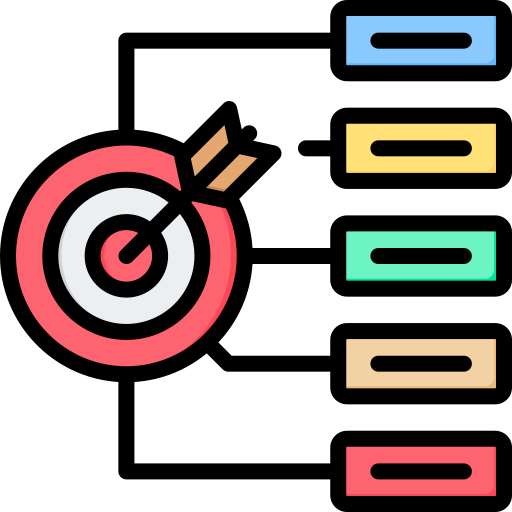 Photo by Joe Yates on Unsplash
Photo by Joe Yates on UnsplashEvery day, companies compete for our attention by selling lifestyles, solutions, and promises. They all have one goal: convincing us their product or service fits into our lives. Understanding these strategies is the heart of competitor analysis.
 Competitor analysis is a flexible practice and can be applied to personal branding, supply chain, vendor analysis, and more — with a few minor tweaks for each field.
Competitor analysis is a flexible practice and can be applied to personal branding, supply chain, vendor analysis, and more — with a few minor tweaks for each field.
By studying competitors' offerings and customer experiences, you can uncover opportunities for efficiency and growth. The first step is understanding why you need this analysis in the first place.
1. Define Purpose and Scope
 Clarify the Purpose
Clarify the Purpose
Before collecting data, the most important question to ask is "Why do you need a competitor analysis?"
Without purpose, you're spending time and energy without an end goal.
Ask yourself the following:
Are you analyzing competitors to create a marketing strategy?
Are you looking to improve your product selection or service quality?
Are you identifying gaps in the market or new opportunities?
 Photo by Franki Chamaki on Unsplash
Photo by Franki Chamaki on UnsplashA great example to see competitors in action is at the grocery store.
Cereal usually uses the same basic ingredients, but companies reshape and market them in different ways to appeal to the same audience.
These cereal companies are direct competitors to each other.
Direct competitors offer similar products or services to the same audience.
An example of indirect competition to cereal would be oatmeal.
Indirect competitors offer different products or services that fulfill the same audience.
In this case, oatmeal targets the same audience as other breakfast foods

Defining Scope: 3 Levels of Analysis
You can conduct competitor analysis around a specific aspect of a competitor's website, service, product, or marketing approach. This can be broken down into 3 levels:
Brand level: overall strategy
Product/Service level: specific offerings
Market segment level: target audience or region
Choosing whether this is a one-time strategic assessment or an ongoing competitive tracking effort is a great way to refine your focus for competitive analysis.
2. Collect Competitor Data Pt 1
The first step of collecting competitor data is to focus on how competitors present themselves and interact with the market, because this leads to the important question of:
"Why choose them?"
 Photo by Rey Joson on Unsplash
Photo by Rey Joson on UnsplashWhere to Start?
To find the competitor's customers and expectations, we can look at their followers on social media, the customer comments, and reviews on websites.
Some resources to utilize are:
The company website: This is where competitors control their narrative. Look at their homepage messaging, about page, and how they describe their products or services. What problems do they claim to solve? What language do they use?
Social media (Facebook, LinkedIn, Instagram, TikTok, Twitter): Observe how they engage with followers. Are they responsive? Casual or formal? How often do they post. This reveals their brand personality and how they want to be perceived.
Customer reviews: These show the gap between what companies promise and what customers actually experience. Look for patterns in complaints and praise. These are goldmines for understanding strengths and weaknesses.

Throughout all these sources, observe how the company advertises itself and what brand image it's selling to the customer.
You can do this by observing their SEO (Search Engine Optimization) keywords and their interactions with their audience (tone, frequency, and responsiveness).
This shows you what the competitor thinks they're good at...which saves you time in your analysis!

With all the information gathered, you can visualize and identify the company's strengths and weaknesses.
3. Collect Competitor Data Pt 2
"How do competitors deliver their value?"
All businesses have to demonstrate how they deliver value to the consumer. Value can be displayed in a variety of ways through pricing, quality, and innovation and, alongside all of the above, the business sells you a promise that only this product or service can provide. One way to observe this is through advertisements.
In the below advertisement, consider these questions:
What promise is Squarespace selling?
Are there any indicators or associations for product quality?

These are just a few things to think about when analyzing how a business portrays itself.

Value, Value, Value
So now that we can understand why a company might sell something super cheap or super premium, let’s bring it back to the buyers.
Even if we were all secretly billionaires, prices still matter when deciding what to purchase.
Businesses know this, and that’s why they layer on all sorts of tactics like pricing tiers, payment plans, discounts, subscriptions, and bundles.
 Photo by John Tuesday on Unsplash
Photo by John Tuesday on UnsplashThis helps make the products/service feel even more of a win on top of what they’re promising, or helps provide a lower barrier of entry into accessing what they're selling.
Why that Price?
Once we establish what pricing tactic the business is using, we've got to ask about the business's intention.
What is their business strategy: Market penetration or premium positioning?
Market penetration = when a company sells products/services at low prices to capture market share.
Premium positioning = when a company sells products/services at higher prices to signal quality, exclusivity, or luxury.
This helps establish the target audience the business is selling to.

Quiz
Based off the above Squarespace ad, are they aiming for market penetration or premium positioning?
4. Define Key Metrics
After collecting all the information, it’s time to organize. By creating clear benchmarks, you can better compare competitors, see what they’re doing well, and spot where room for improvement.
Below is an example of what metrics you can utilize when organizing your information:
To hear an audio version of the information in the image above, click the play button on the audio player below:

SWOT Analysis
Once your data is organized, pulling insights becomes easier and a SWOT (Strengths, Weaknesses, Opportunities, Threats) analysis can be conducted.
For each competitor, break it down:
Strengths: What they do best
Weaknesses: Where they fall short
Opportunities: Chances to grow or improve
Threats: Risks they face
Next, visualize how competitors position themselves: think price vs. quality or innovation vs. tradition. This also connects to brand identity and how they market their products or services.
By doing this, you can spot where a brand fits and uncover gaps in the market.
Take Action
Every product tells a story about what people want and competitor analysis lets you read between the lines, revealing how brands connect, compete, and grow.
Competitor analysis can be overwhelming but by approaching it one section at a time, you'll find that each step build upon itself, strengthening our skills as a whole to becoming a smarter analyst.

No matter the field, by examining how others position their products and services, you can discover what makes them resonate with audiences and how you or a brand can stand out.
As you move forward, ask yourself:
“How does what I’ve learned about competitors shape my own direction and decisions?”
Next Steps:
Your feedback matters to us.
This Byte helped me better understand the topic.
